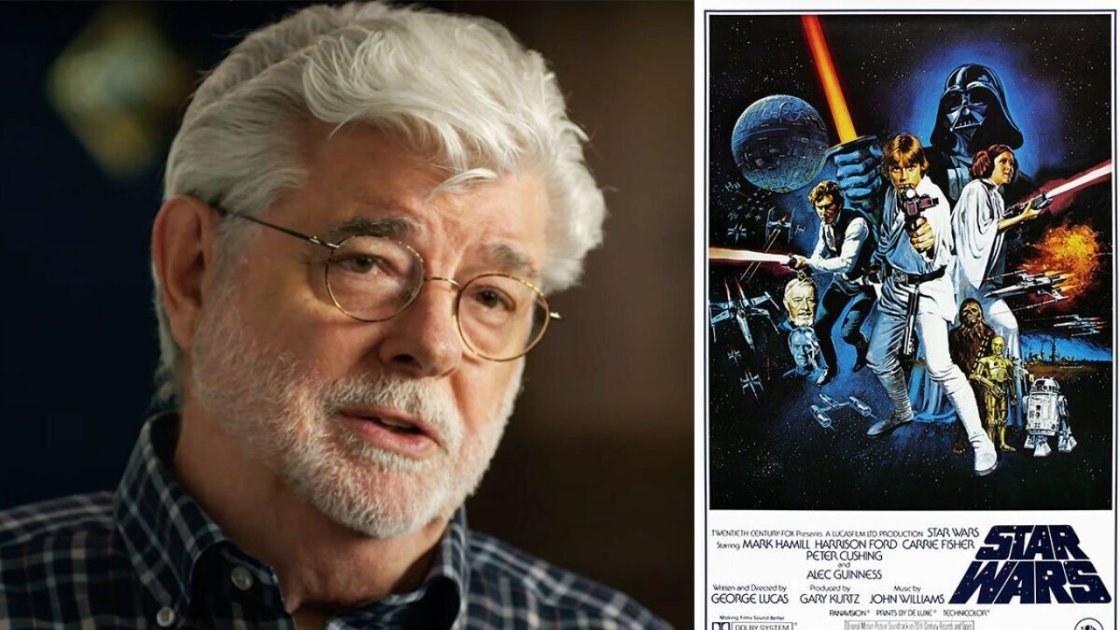
First, in the late 1970s, Star Wars revived the marketplace for space science fiction as a genre. Space adventures had found wide audiences in the 1930s through characters such as Buck Rogers and Flash Gordon that began in short stories or comic strips and developed through movie serials and radio programs. The toys from Buck Rogers even have a holiday story of their own. But by the 1950s, space science fiction appeared mostly in alien monster movies or as children’s television programming that was cheaply produced and melodramatic. The unexpected success of the first Star Wars movie in 1977 inspired other production houses to rediscover space adventures as a bankable genre. For instance, the planned television series Star Trek: Phase II was revamped and greenlit as Star Trek: The Motion Picture (1979). The success of science fiction and fantasy movies in the 1980s and beyond owes much to Star Wars.
Also Read : Astonishing 'Star Wars' Facts Even Fans Aren't Aware Of
George Lucas Efforts in Redefining Hollywood

Lucas allowed others to share in his world, which in turn allowed lots of different Star Wars stories to flourish — and planted the seeds of today's geek culture All those toys made money, of course, but they also helped bring fans into the larger Star Wars universe, allowing them to participate, through creative play and their own imaginations, in the world that Lucas had created. Indeed, one of the biggest reasons Star Wars became such a vibrant cultural force is that Lucas, even as sole owner of the franchise’s creative rights, consistently allowed others, both amateurs and professionals, to play in his sci-fi sandbox. One way he did that was through the Expanded Universe, which encompasses all the licensed products — not only the toys but also a series of novels, games, comics, and more. The novels, in particular, helped flesh out the world that Lucas had created, adding new characters and new lore to the intergalactic conflict he imagined in the movies. The quality of the storytelling in the Expanded Universe could sometimes be uneven, and without much central direction there were problems with continuity and consistency. But it kept the franchise alive between films, giving fans something to cling to while bringing new creative energy to the series. (Most of the Expanded Universe has been scrapped in recent years, to make way for the Disney-era storylines.)
Also Read : The Star Wars Franchise Has Successfully Executed A Clever Retcon Of Ahsoka Tano
Lucas, of course, egged on the public’s imagination through his innovative use of special effects.

The first Star Wars not only pioneered the use of computers in special effects filmmaking, it essentially invented the modern Hollywood special effects house. When Lucas set out to make Star Wars, the studios had closed down their in-house effects shops, so he set up his own, called Industrial Light and Magic (ILM). Today, ILM is arguably the premier effects shop in Hollywood, and the model on which its many competitors are based. However, when it was formed, it was just a bunch of creative oddballs working out of a warehouse in Van Nuys, California. As advances in effects technology, many pioneered by ILM, progressed in the years after Star Wars, this became even truer all throughout Hollywood. No longer were effects just designed to serve the story. Stories were designed to serve the effects.
For Lucas, of course, there was little difference between the two. The dialogue he wrote could at times be stilted and difficult for actors to deliver, as several of the film’s stars suggested in the 2004 documentary Empire of Dreams, but the dialogue wasn't the point.
This approach turned Star Wars into a massive financial success: By the end of its first theatrical run, the movie grossed more than $230 million in domestic box office. Led by that success, 20th Century Fox, the studio behind the first film, booked a $79 million profit in 1977, the year of its release — more than double its previous annual record of $37 million. Studios have been chasing that sort of success ever since, aiming to generate it multiple times every year.
Also Read : Star Wars Completes A Retcon Of Smart Ahsoka Tano After 15 Years